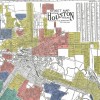
Social and Emotional Skills of Students in the Houston Independent School District (Brief 1)
Two briefs analyze the social and emotional skills of a representative group of 10 and 15-year-old students in HISD.

Social and Emotional Skills of Students in the Houston Independent School District (Brief 1)
Two briefs analyze the social and emotional skills of a representative group of 10 and 15-year-old students in HISD.

Texas’ approach to virtual learning is another step backward for equity
Texas Senate Bill 15 is awaiting Gov. Greg Abbott’s signature. Originally intended to set in place policy to fully fund virtual schooling for districts around the state, the passage of this bill could have been a proud moment for Texans, a response to the immediate needs of school districts during the pandemic.

Predictors of School Year Student Mobility in the Houston Region
This study identified student characteristics associated with school year mobility for more than 260,000 students in grades 4 through 8 who began the 2016-17 school year at a school in one of ten Houston area school districts.

Without mask mandates, Texas undermines school districts' efforts to undo pandemic learning gaps
The Texas Supreme Court’s decision to uphold Gov. Greg Abbott’s ban on local mask mandates means the state has officially told public schools to start the 2021-2022 school year as if the COVID-19 pandemic never happened. More correctly, as if it was still not happening. Others have already pointed to the health risks posed by not having a mask mandate in place at schools, and schools around the Houston area have already had to close because of outbreaks. But beyond the dangers posed to the health of students, staff, and families, the state’s approach is undermining schools’ ability to accelerate students’ learning and close gaps created and compounded over the past 18 months.

With 25 years of service, the Girls Empowerment Network's focus on listening and being responsive to its clients drove home a key lesson: For any nonprofit to be effective, it needs to continually make its services accessible to people.

Changing Schools: Differences in School Year Student Mobility by Subgroup (Part 4)
This study used seven years of data from the state of Texas (2010-11 through 2016-17) to illustrate how statewide patterns of school year student mobility differed by subgroup. Patterns of student mobility differed by race, socioeconomic status, and English learner status.

The shift to 100% online instruction in response to the COVID-19 pandemic in spring 2020 meant school districts around the country needed to quickly develop plans for how to implement distance learning and serve student needs. The Houston Education Research Consortium analyzed the plans of 45 school districts from 15 states for insights into the collective response to the pandemic.

HERC collected 45 school district action plans addressing continuity of learning during the COVID-19 pandemic from school districts in 15 states that were publicly available between March and May 2020.

Concentrated poverty in schools is redlining’s legacy. Undoing it should be ours.
As the school year ends, the relief is palpable. Let’s acknowledge what we went through during the pandemic. Many of us are feeling burnt out, but this is not the time to stop paying attention. Now is the moment to think big about the future of education.

Eviction Prevalence and Spatial Variation Within the Houston Independent School District
This research brief examines the distribution of eviction filings across the Houston Independent School District (HISD) in 2017 and 2018.

In its 10th year, Community Bridges projects confront ever-apparent inequalities in Houston
The inequality that exists across Houston neighborhoods has perhaps never been more evident than it has over the past year.

To investigate this phenomenon of “returners,” Houston Education Research Consortium researchers followed two types of leavers in a cohort of Houston-area students to see if and when they return.

Surveying Houston’s progressive shift through 40 years of data
Houston, a quintessentially free-enterprise, anti-government city, is increasingly recognizing the critical role of government in strengthening the safety net, expanding opportunity and building resiliency, according to the Kinder Houston Area Surveys.

The Literacy by 3 Classroom Practices and Campus Literacy Growth study is the first to examine the relationship between Literacy by 3 practices and campus literacy growth in HISD.

Kinder Houston Area Survey: 2021 Results
For the past four decades, Rice University’s Kinder Houston Area Survey (KHAS) has been tracking the changing attitudes and beliefs of Harris County residents. The 2021 survey summarizes the most consequential changes and their implications for public policy initiatives going forward.
Rice University
Kraft Hall
6100 Main Street, Suite 305
Houston, TX 77005-1892